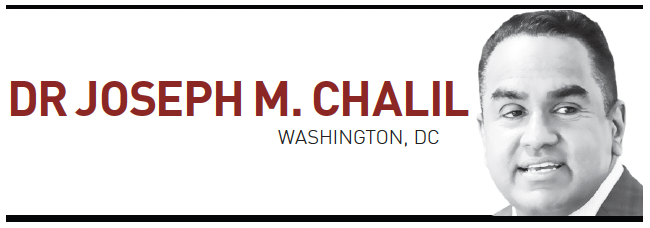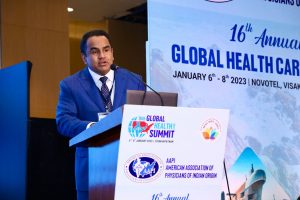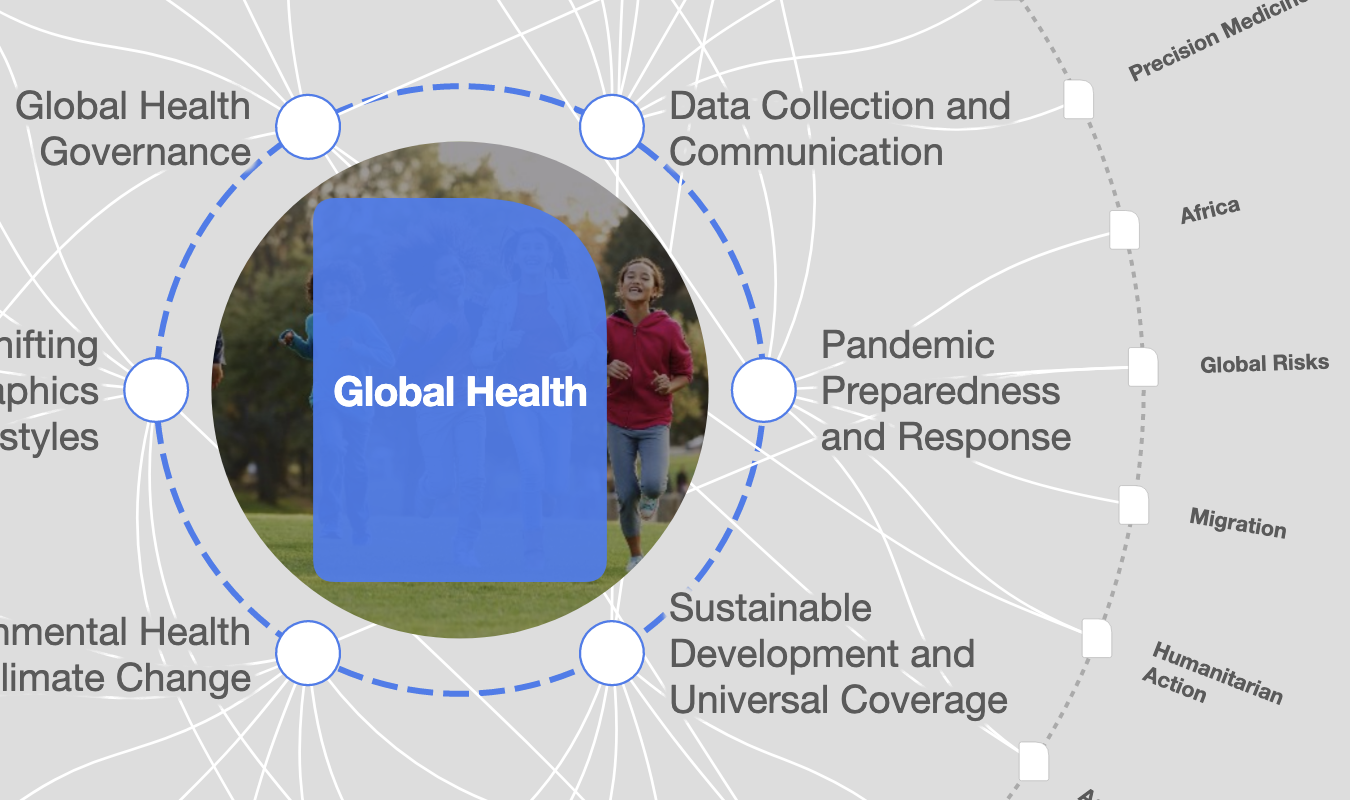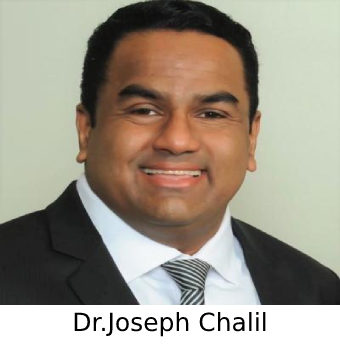Medical colleges grew by 78% in India compared to 9% in the US and 0% in Canada since 2014, while the MBBS seats increased by 105% in India, outpacing growth in the US and Canada. AIIMS grew by 186%. Is this time for ‘One India, One Healthcare?’
 With the term of Prime Minister Narendra Modi entering its 9th year, the effect of his government’s healthcare policies has been scrutinized, particularly analyzing its response to the pandemic that swept the globe. Covid exposed many weaknesses in healthcare systems worldwide, from manufacturing critical vaccines to a shortage of medical personnel, facilities, and equipment. India uncovered several areas that needed attention, but also plenty to celebrate. Although India has only been independent for 75 years, it has managed to build a significant infrastructure meant to care for its citizens, which quickly adapted to meet the demand for manufacturing and production in the face of the worldwide health crisis. During the nine years of the Modi government, several changes have been made in the healthcare sector that made this possible. Here are some of the highlights:
With the term of Prime Minister Narendra Modi entering its 9th year, the effect of his government’s healthcare policies has been scrutinized, particularly analyzing its response to the pandemic that swept the globe. Covid exposed many weaknesses in healthcare systems worldwide, from manufacturing critical vaccines to a shortage of medical personnel, facilities, and equipment. India uncovered several areas that needed attention, but also plenty to celebrate. Although India has only been independent for 75 years, it has managed to build a significant infrastructure meant to care for its citizens, which quickly adapted to meet the demand for manufacturing and production in the face of the worldwide health crisis. During the nine years of the Modi government, several changes have been made in the healthcare sector that made this possible. Here are some of the highlights:
Ayushman Bharat: One of the significant healthcare initiatives of the Modi government is the Ayushman Bharat scheme, which aims to provide health coverage to over 500 million people from economically weaker sections of society. The scheme provides cashless health insurance coverage of up to Rs 5 lakh per family per year for secondary and tertiary care hospitalization and prescriptions after a hospital stay for up to a year. As a result, India has made significant strides in providing coverage of what could otherwise be catastrophic healthcare costs. But now the focus needs to shift towards covering annual physical exams and prescription drugs for chronic disease management like diabetes and heart disease to prevent those hospitalizations while maximizing the health of Indians, regardless of income status.
Digital Health Mission: The government launched the National Digital Health Mission (NDHM) in August 2020, which aims to create a digital health ecosystem that will provide universal health coverage, including access to health records and other healthcare services for all citizens. Millions have transitioned to telehealth consultations during Covid-19, allowing them to receive care without extensive travel costs while minimizing the spread of illness.
Infrastructure Development: The government has invested significantly in improving healthcare infrastructure, including building new medical colleges, upgrading existing healthcare facilities, and expanding the number of hospital beds. Many of these programs have succeeded, mainly as India established 302 new medical colleges in the past nine years, outpacing countries worldwide. Today, India can boast an over 78% growth in its number of medical schools, opening the doors for more doctors and medical personnel to be trained, thus addressing an ever-increasing need for these professionals globally. While more medical professionals are needed, India is increasing the educational opportunities available. The next stage in its development is maintaining the highest standards within each new medical school as it comes online. In addition, a recommendation will be to mandate NABH accreditation for all medical colleges and hospitals, including government hospitals.
Covid-19 Response: The government took several steps to combat the pandemic, including setting up Covid-19 hospitals and increasing the number of testing facilities. They also increased the production of vaccines and could vaccinate nearly their entire population, which was a target few other countries achieved.
Despite these initiatives, several challenges still need to be addressed in the healthcare sector. Here are just a few suggestions to continue to build upon the progress that has already been made:
ONE INDIA, ONE HEALTHCARE
Healthcare delivery in India is decentralized and varies from state to state as it’s currently a state subject. Various factors like low levels of education, lack of environmental sanitation and safe drinking water, under-nutrition, poor housing conditions, tobacco consumption, poverty, unemployment, unhealthy lifestyle, etc., impact health.
The allocation of funds to the health sector inter-alia depends on the government’s overall resource availability, competing sectoral priorities, and the system’s absorptive capacity. With the advancement in technology and telemedicine and labour migration leading to interstate commerce, one could argue it is time for a constitutional amendment to guarantee access to primary healthcare to every citizen as a fundamental right and change healthcare to a Central subject. The Covid-19 pandemic also showed us that state borders are irrelevant regarding disease prevention and healthcare delivery. It’s time for “One India, One Healthcare.”
PUBLIC HEALTHCARE CIVIL SERVANTS
Government hospitals are managed by doctors promoted based on their seniority rather than their training in hospital management, while professional hospital managers manage private hospitals. Managing a public health system for the largest population in the world takes work, even for the best doctor with decades of experience in patient care.
Indian civil services select and train senior bureaucrats who lead the Indian government. India currently has several IAS and IFS officers with MBBS training. I propose that the Government of India create an Indian Health Service (IHS) branch. India will need 742 “IHS” officers, one per district, who are ranked equal to the IAS officers to coordinate the public health system of the district. By creating a civil service branch to manage healthcare centres and increasing medical and nursing colleges to one per district, a large workforce could be made available to staff these facilities adequately.
Work in rural areas could also be mandated, allowing communities and villages to receive quality care. For instance, part of a doctor’s training could include a year or more of service in a rural village working in a primary care centre. Other options include incentives to reduce educational costs in exchange for time served in a primary healthcare center.
FOCUS ON PRIMARY AND PREVENTIVE HEALTHCARE
While the Ayushman Bharat scheme focuses on secondary and tertiary healthcare, more future emphasis should be given to preventing fraud using the DRG payment system and covering primary healthcare, including chronic disease management and community health. With all its progress, India still struggles with the rapidly growing burden of chronic diseases and the demands on its healthcare system. Chronic conditions like diabetes only worsen, resulting in complications and hospitalizations without proper and consistent treatment.
How can these issues be addressed? First, by mandating wellness exams yearly and prioritizing primary and preventive care for all citizens. Identifying and managing chronic diseases early is more effective and less costly than managing and treating their complications. Like countries around the globe, India faces geographic variations in the quality of healthcare services and providers, reflecting the need for consistent processes and standards throughout the country.
Second, in determining the best path forward, the process of delivering healthcare services needs to be improved by differences in the funding and availability of healthcare options within each state. To move to a universal healthcare system, India needs to be willing to step away from the current state model that does not evenly address the needs of all Indian citizens. Instead, we must embrace a “One India, One Healthcare” for all citizens. Private-public partnerships in primary healthcare delivery should be encouraged.
With a long history of rising to the challenge, India can continue to lead the world in tackling healthcare issues for all, particularly by elevating the value of primary care, annual physical exams, and continued investment in environmental policies that can positively impact all Indians. With the largest population in the world, India could lead the world in providing quality healthcare to all its citizens.
The biggest democracy in the world needs urgent investment in the health of all its citizens and reform the public healthcare system while maintaining the current rate of infrastructure growth.
Prof (Dr.) Joseph M. Chalil is an Adjunct Professor & Chair of the Complex Health Systems advisory board at Nova Southeastern University’s School of Business, the Chief Medical Officer at Novo Integrated Sciences, Inc, and the Chief Strategy Officer of the American Association of Physicians of Indian Origin (AAPI). He recently published a best-seller book, “Beyond the Covid-19 Pandemic: Envisioning a Better World by Transforming the Future of Healthcare.”



 Dexamethasone, an inexpensive corticosteroid, is an older drug that has been found most beneficial in hospitalized patients who require invasive mechanical ventilation. Yet, when given too early in Covid-19, for example, when supplemental oxygen is not required, dexamethasone may be detrimental. Dexamethasone may also be inappropriate for use in patients that have co-morbidities such as obesity and diabetes. Dexamethasone has been used to reduce cellular immune responses and treat patients with acute respiratory distress syndrome (ARDS). It is now repurposed to combat severe symptoms of Covid-19 and is one tool in the Covid-19 treatment armamentarium.
Dexamethasone, an inexpensive corticosteroid, is an older drug that has been found most beneficial in hospitalized patients who require invasive mechanical ventilation. Yet, when given too early in Covid-19, for example, when supplemental oxygen is not required, dexamethasone may be detrimental. Dexamethasone may also be inappropriate for use in patients that have co-morbidities such as obesity and diabetes. Dexamethasone has been used to reduce cellular immune responses and treat patients with acute respiratory distress syndrome (ARDS). It is now repurposed to combat severe symptoms of Covid-19 and is one tool in the Covid-19 treatment armamentarium. AirSep Corporation of New York has installed PSA Medical Oxygen Systems in more than 4,500 hospitals in nearly 50 countries worldwide, including several hospitals in India, to meet their central pipeline and other oxygen needs. These generators and plants operate automatically to supply patient, surgical, and critical care units in medical facilities, military field hospitals, on-site emergency preparedness centers, and disaster-relief efforts. There are several other manufacturers with similar technologies.
AirSep Corporation of New York has installed PSA Medical Oxygen Systems in more than 4,500 hospitals in nearly 50 countries worldwide, including several hospitals in India, to meet their central pipeline and other oxygen needs. These generators and plants operate automatically to supply patient, surgical, and critical care units in medical facilities, military field hospitals, on-site emergency preparedness centers, and disaster-relief efforts. There are several other manufacturers with similar technologies. Let this be the Last Medical Oxygen Crisis in India. Let us not scramble our resources; purchasing compressed liquid oxygen from Russia or China, which at best is a temporary fix but will arrive too late for our patients’ bedside in Delhi. Let us retrofit our hospitals with central oxygen piping
Let this be the Last Medical Oxygen Crisis in India. Let us not scramble our resources; purchasing compressed liquid oxygen from Russia or China, which at best is a temporary fix but will arrive too late for our patients’ bedside in Delhi. Let us retrofit our hospitals with central oxygen piping